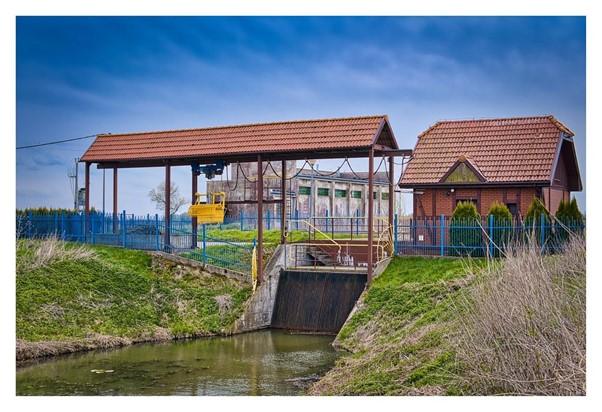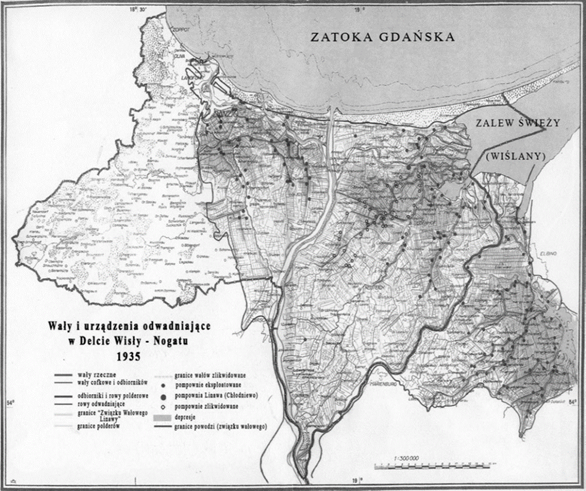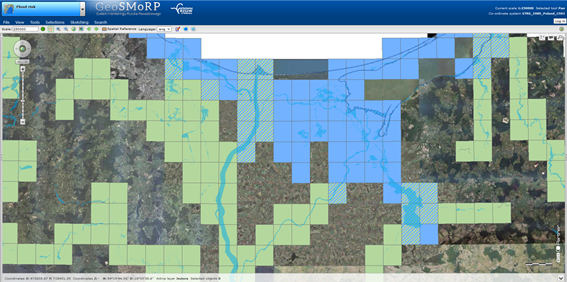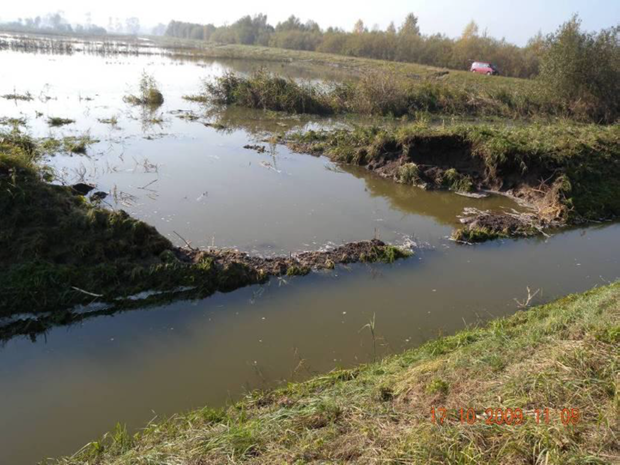Marcel Andrzejczak
Water-related heritage can play an important role in creating a sustainable future for various kinds of landscapes. As an intern at the Cultural Heritage Agency of the Netherlands, Marcel Andrzejczak conducted research on two vastly different projects and the history of Żuławy in Poland. Although he found that heritage takes very different positions in the two projects, in both cases it can to some extent contribute to accommodate its current needs, support revitalizing the region and even help in solving its water challenges. In this blog, he and his supervisor Jean-Paul Corten of the Dutch Department for Heritage (RCE) analyze two case studies in the Żuławy heritage “waterscape” and identify which landscape elements, values, tools, and practices can help in drawing a future perspective for this region.
Żuławy Wiślane is the vast hinterland of the port city of Gdansk in northern Poland. For centuries, it supplied the city of Gdansk with food, goods and labor force. In turn, the hinterland relied on the port of Gdansk for shipping its agricultural products to foreign markets. Żuławy Wiślane is located in the Vistula delta between the cities of Gdansk and Elblag, a region unlike any other in the country. Its unique landscape, with a network of canals, dikes and other elements of water infrastructure amounting to more than 20.000km (Bartman 2000), brings to mind the image of Dutch agricultural lands – logically structured and artificially created – more so than it does of the typically chaotic Polish countryside that can be encountered elsewhere in the country (Fig. 1).

The similarity to Dutch landscapes is not merely aesthetic and has historical reasons: the landscape of Żuławy has been, in fact, heavily influenced by Dutch interference. While this landscape may appear serene to the observer today, behind it is a rich, tumultuous, and at times violent history that in essence has been defined by a changing relationship between humans and nature. Out of all the natural forces and features that have played (and continue to play) a role in the shaping of this landscape, one stands out as clearly being the most prominent – water. The water infrastructure system of Żuławy and the legacy of water management that comes with it is not only an important part of the cultural heritage of this region, but still provides the basis of the functioning of this landscape and secures the livelihoods of the people that inhabit it today.
“The water system of Żuławy is not only an important part of the cultural heritage of this region, but is still the basis of the functioning of this landscape”
The initial development of the water infrastructure system in Żuławy can be traced back to the 14th century, when the land was under the rule of the Teutonic Order. During that time, the Order began an intense wave of settling and founded dozens of new municipalities, aiming to benefit economically from the incredibly fertile, yet vulnerable and unstable land (Kizik 2007). The serfs who made up these new communities were tasked with developing the land, which included constructing dikes to prevent flooding (Szalygin). Already during these early stages of Żuławy’s development, water management became a part of the cultural landscape of the region - local councils were established to build, oversee, and maintain water infrastructure (Szalygin).
The most defining moment for this infrastructure system, however, was the arrival of Dutch settlers in the 16th century, who were invited to Żuławy specifically to further develop the landscape using the knowledge and expertise they had obtained in the Netherlands. These settlers drained wetlands, cleared forests, created polders and constructed numerous elements of water infrastructure (Szalygin 2000), making the landscape more resilient to floods and bringing it close to what it is today. New social structures, such as dike associations, were created to support this undertaking. The water system of Żuławy underwent another wave of intense development in the 19th and20th century under Prussian (and then German) rule (Fig. 2); contemporary technology (e.g., combustion engine, electricity) was used to modernize the system and usher in a new period of abundance (Bartman 2000). As a result of destruction during World War II, systematic neglect during the communist period, and chaotic development in the initial years of post-1989 Polish democracy, Żuławy was in quite a deplorable state at the end of the 20th century. This last period is especially relevant to understanding the precarious state of Żuławy today.

Today, the region and its water system find itself in a vulnerable position, due to a combination of natural and human factors. As the biggest area below sea level in Poland, Żuławy is extremely vulnerable to climate change and especially flooding (Fig. 3); commonly occurring droughts and low precipitation can lead to the depletion and further pollution of groundwater as well as deterioration of fertile soil. The neglect and deterioration the region faces, insufficient investment and often a lack of knowledge stemming from a complete population exchange after World War II remain the biggest threat not only to the water system itself but to the livelihoods of the people who rely on it (“Program Żuławski” 2010). Significant investments into repair and modernization as well as constant maintenance is crucial to keep this system functional and to give this landscape and its cultural heritage a resilient future. Some efforts are already taking place with this very aim, both on the technical and social level. The “Program Żuławski 2030” plan, for example, is the largest water infrastructure project to date in the region – spreading over 20 years and with a budget of billions of PLN (“Program Żuławski” 2010), it is focused on improving the flood security of Żuławy by rebuilding and modernizing elements of water infrastructure and developing tools and mechanisms for flood detection and prevention (Fig. 4). One of the most important elements of the programme is the development of GeoSMoRP – a comprehensive, publicly available mapping tool for monitoring flood risk in vulnerable areas. Other goals include building predictive models for estimating maximum flood water levels and systematizing mechanisms of information exchange between relevant authorities (“Program Żuławski” 2010). “Związki Wałowe Wracają” (dike associations return) is another initiative that aimed to tackle this issue, but on a social and cultural level. The project, which took place a few years ago, promoted social forms of flood protection by referring to the tradition of dike associations and reintroducing that element of heritage in a modernized way.

Several heritage elements of the water infrastructure system can still perform their original function and contribute to providing water security for the region. Others can function as tourist attractions and thus participate in the economic growth of Żuławy, even if tourism is not sustainable as the main form of development. It is also important to note that even though this landscape is greatly determined by its water system, it is by no means undivided; fragmentation and inequalities are visible to the naked eye as I myself have discovered during a research excursion to the region. Additionally, the threats to the heritage in Żuławy are largely the same as the threats to the whole landscape, which means that region-wide initiatives are likely to benefit heritage even if it is not their main purpose. Finally, heritage practices can contribute to building community ties, protecting against floods, and involving the community in the maintenance of this landscape, making it a legitimate tool for building a sustainable future.

The future of the Żuławy landscape, its hydrotechnical heritage and the water system will ultimately depend on initiatives like Program Żuławski 2030 and Związki Wałowe Wracają. More projects of both kinds – sociocultural and technical – will be necessary for Żuławy to regain its vitality and develop sustainably. The urgency of this need, however, cannot be understated – inaction will undoubtedly exacerbate the challenges the region is facing and eventually lead to catastrophic consequences.
Acknowledgement
The Blue Papers is a series of thought-provoking short essays on water. Authors have been invited by the platform Water Values: Connecting Past, Present & Future, an initiative of ICOMOS-NL, TU Delft and University of Groningen to argue the importance of heritage and a cultural approach within water related challenges. The papers were edited by PCF’s Carola Hein and Hilde Sennema. Marcel Andrzejczak, is a master student of Heritage and Memory Studies at the University of Amsterdam. Jean-Paul Corten, Cultural Heritage Agency of the Netherlands, supervised his internship and reviewed this text.
References
Bartman, Edward. “Gospodarka Krajobrazowa na Żuławach.” Krajobrazy Dziedzictwa Narodowego, no. 4, Ośrodek Ochrony Zabytkowego Krajobrazu, 2000, pp. 65-76.
Kizik, Edmund. “Ziemia Obiecana – Ziemia Utracona. Społeczne Dzieje Mennonitów w Gdańsku, Elblągu i na Żuławach Wiślanych od Drugiej Połowy XVII Wieku do 1945 Roku.” Mennonici na Żuławach – Ocalone Dziedzictwo, edited by Grażyna Szcześniak and Iwona Ziętkiewicz, Muzeum Narodowe w Gdańsku, 2007, pp. 24-50.
“Program Żuławski – 2030.” Regionalny Zarząd Gospodarki Wodnej w Gdańsku, 2010.
Szałygin, Jerzy. “Historia Żuław.” Katalog zabytków osadnictwa holenderskiego w Polsce, www.holland.org.pl/art.php?kat=art&dzial=zul&id=3. Accessed 9 July 2021.
---. “Krajobraz Kulturowy Wsi Osadnictwa „Olęderskiego”.” Krajobrazy Dziedzictwa Narodowego, no.4, Ośrodek Ochrony Zabytkowego Krajobrazu, 2000, pp. 31-37.
